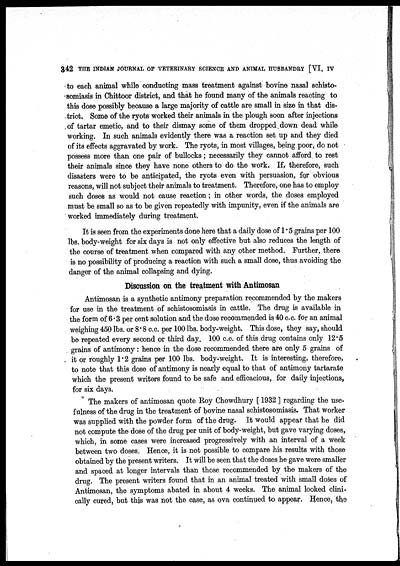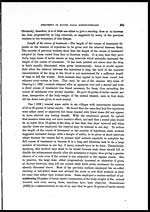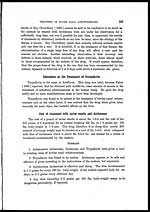Medicine - Veterinary > Veterinary colleges and laboratories > Indian journal of veterinary science and animal husbandry > Volume 6, 1936 > Articles > Observations on the treatment of bovine nasal schistosomiasis
(398) Page 342
Download files
Individual page:
Thumbnail gallery: Grid view | List view

342 THE INDIAN JOURNAL OF VETERINARY SCIENCE AND ANIMAL HUSBANDRY [VI, IV
to each animal while conducting mass treatment against bovine nasal schisto-
somiasis in Chittoor district, and that he found many of the animals reacting to
this dose possibly because a large majority of cattle are small in size in that dis-
trict. Some of the ryots worked their animals in the plough soon after injections
of tartar emetic, and to their dismay some of them dropped down dead while
working. In such animals evidently there was a reaction set up and they died
of its effects aggravated by work. The ryots, in most villages, being poor, do not
possess more than one pair of bullocks; necessarily they cannot afford to rest
their animals since they have none others to do the work. If, therefore, such
disasters were to be anticipated, the ryots even with persuasion, for obvious
reasons, will not subject their animals to treatment. Therefore, one has to employ
such doses as would not cause reaction ; in other words, the doses employed
must be small so as to be given repeatedly with impunity, even if the animals are
worked immediately during treatment.
It is seen from the experiments done here that a daily dose of 1.5 grains per 100
lbs. body-weight for six days is not only effective but also reduces the length of
the course of treatment when compared with any other method. Further, there
is no possibility of producing a reaction with such a small dose, thus avoiding the
danger of the animal collapsing and dying.
Discussion on the treatment with Antimosan
Antimosan is a synthetic antimony preparation recommended by the makers
for use in the treatment of schistosomiasis in cattle. The drug is available in
the form of 6.3 per cent solution and the dose recommended is 40 c.c. for an animal
weighing 450 lbs. or 8.8 c.c. per 100 lbs. body-weight. This dose, they say, should
be repeated every second or third day. 100 c.c. of this drug contains only 12.5
grains of antimony : hence in the dose recommended there are only 5 grains of
it or roughly 1.2 grains per 100 lbs. body-weight. It is interesting, therefore,
to note that this dose of antimony is nearly equal to that of antimony tartarate
which the present writers found to be safe and efficacious, for daily injections,
for six days.
The makers of antimosan quote Roy Chowdhury [ 1932 ] regarding the use-
fulness of the drug in the treatment of bovine nasal schistosomiasis. That worker
was supplied with the powder form of the drug. It would appear that he did
not compute the dose of the drug per unit of body-weight, but gave varying doses,
which, in some cases were increased progressively with an interval of a week
between two doses. Hence, it is not possible to compare his results with those
obtained by the present writers. It will be seen that the doses he gave were smaller
and spaced at longer intervals than those recommended by the makers of the
drug. The present writers found that in an animal treated with small doses of
Antimosan, the symptoms abated in about 4 weeks. The animal looked clini-
cally cured, but this was not the case, as ova continued to appear. Hence, the
Set display mode to: Large image | Zoom image | Transcription
Images and transcriptions on this page, including medium image downloads, may be used under the Creative Commons Attribution 4.0 International Licence unless otherwise stated. ![]()
| Permanent URL | https://digital.nls.uk/75238735 |
|---|
| Description | Covers articles from 1936. |
|---|




